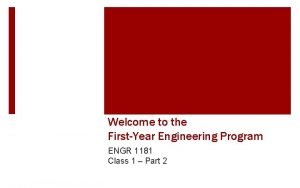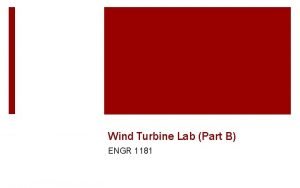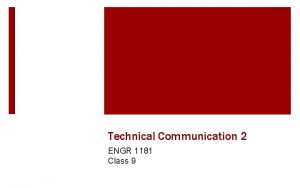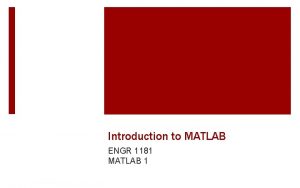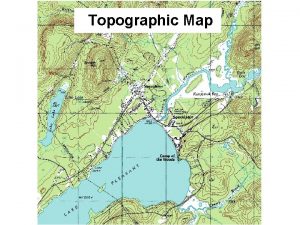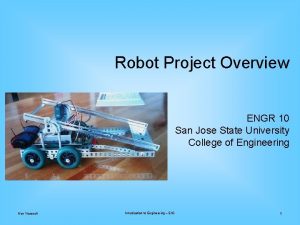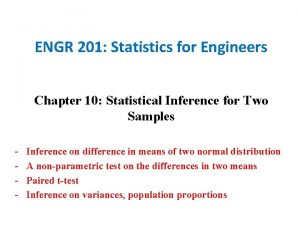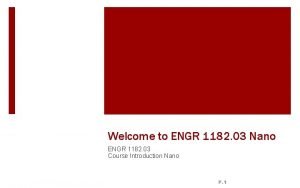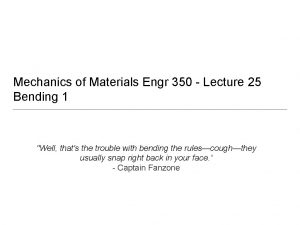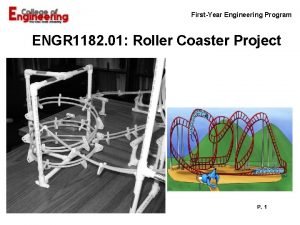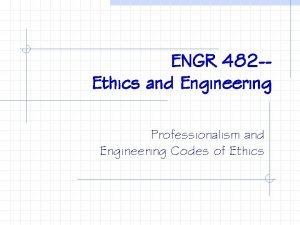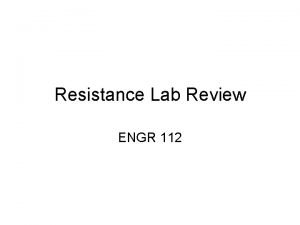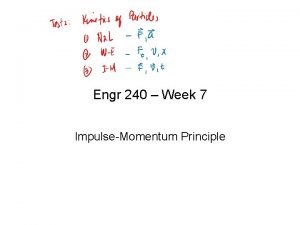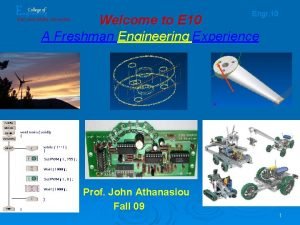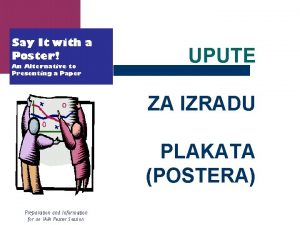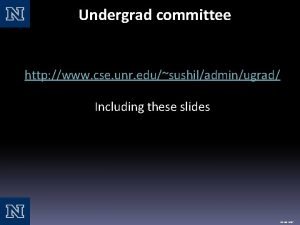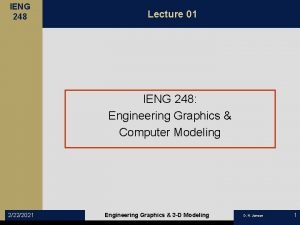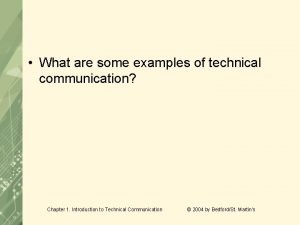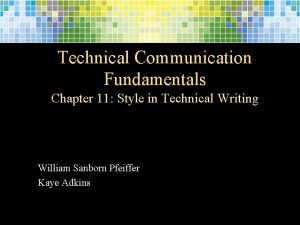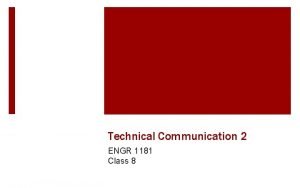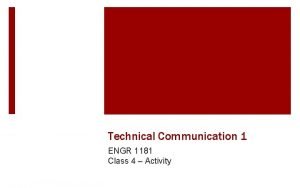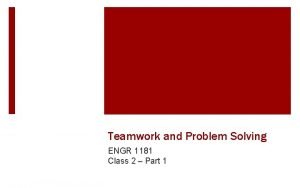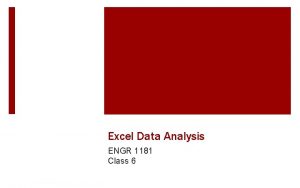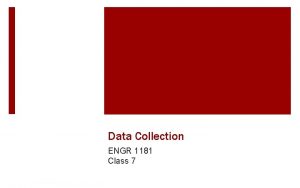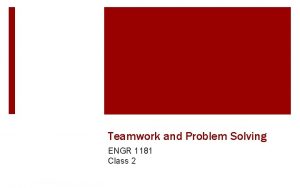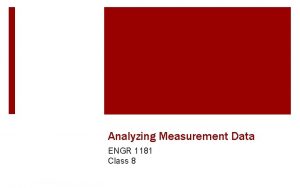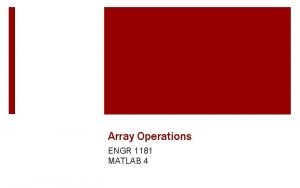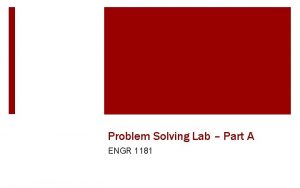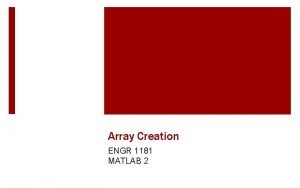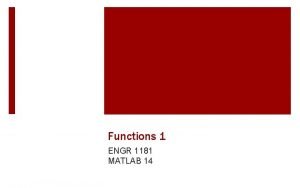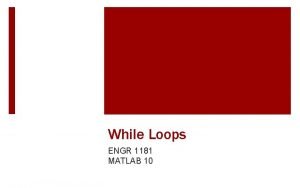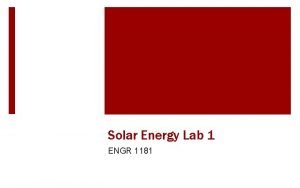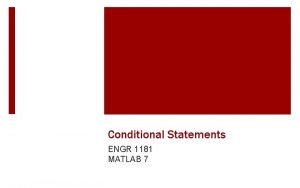Technical Communication 1 ENGR 1181 Class 4 Technical




















- Slides: 20

Technical Communication 1 ENGR 1181 Class 4

Technical Communications in the Real World Communication, both oral and written, is extremely important in the business world. The best communicators are often the most successful people. Steve Jobs was an excellent communicator.

Why do engineers need to communicate? Living in a “sound bite” world, engineers must learn to communicate effectively … If we place our trust solely in the primacy of logic and technical skills, we will lose the contest for the public’s attention—and in the end, both the public and the engineer will be the loser. -Norman Augustine, chair of the Human Space Flight Committee

Today's Learning Objectives § After today’s class, students will be able to: • Define technical communication, especially in engineering. • Explain at least three differences between technical communication and high school writing. • Discuss at least two specific uses for technical communication in engineering. • Describe written forms of technical communication.

What is Technical Communication? § A method of sharing information about specialized subjects § Examples include: • Laboratory reports and memos • Project contract or bid proposal • Assembly instructions for a toy • User guide for software • Drug prescription • Patents • Technical articles and publications

Written Communication In This Class § Four types of written documents: • Executive Summary • Lab Memo Executive Summary • Lab Report Lab Memo • Project Notebook Lab Report § Start simple and gradually increase in detail, content sections, and overall size Project Notebook

Written Communication Executive Summary: • This short document (1 -2 pages) provides a brief overview of the lab and contains key facts, results, and conclusions. Lab Memo: • This document is formatted like a standard business memo. Its purpose is to report the data, observations, and results obtained in lab. Lab Report: Project Notebook: • This document is more formal than a Memo and contains additional sections with more detailed information. • This large document serves to record your team’s activities and progress through completion of an extensive design/build task.

Key Techniques § Technical Communication Style: • Use 3 rd Person • Use Past Tense • Avoid Emotional Statements • Use Passive Voice Deliberately • Use Short Sentences • Use Bulleted and Numbered Lists

Using the Technical Communication Guide § The Technical Communication Guide aids students and contains: • An introduction to technical communication • An explanation of the different types of written and verbal presentation assignments in the class • A description of helpful software tools and grammatical rules

Technical Communication vs. High School Writing Technical Communication § Expository § Informative § Double spaced § Often Single Spaced § Essay format § Professional format § Descriptive § Concise and precise § Length requirement § Short is preferred

Written Communication in the Form of Emails § Consider your audience. § Content and phrasing needs to be adjusted according to the audience’s expectations. § At OSU, professors, GTAs, and UTAs should be considered a formal audience.

Email Guidelines § Include a brief, informative subject line in your Email. § Example: • Question about the homework for the 1181 Technical Communication Class

Email Guidelines § Include a greeting to open your Email. § Examples: • Dear Instructor Corrigan: • Dear Dr. Abrams:

Email Guidelines § Your message should be written in a formal style. • Use regular sentence capitalization and punctuation. • Use full sentences. • Check spelling. § Use formatting to divide your message. • Use short paragraphs. • Include headings.

Email Guidelines § Include a Closing with your full name and your contact information. § Example: • Thanks for your help, Lauren Corrigan, corrigan. 59@osu. edu

Email Example 1 Dear Instructor Corrigan: Hello, I'm Mi Yang from your ENGR 1181 in Spring 2015. I have been admitted by the University of Houston, University of Texas at Dallas, and Fordham University at New York, I have accepted the offer from University of Houston. I am really grateful for your kindness and help. I will always remember and be thankful for how you inspired me in your class and how you supported me to pursue a higher education in a Master’s program. Sincerely, Mi Yang The Ohio State University 614 -555 -2014

Email Example 2 I MISSED CLASS YESTERDAY AND I WANT TO KNOW IF I MISSED ANYTHING OR WHAT. IF THERE IS A HANDOUT, I EXPECT YOU TO SEND IT TO ME BEFORE TOMORROW SINCE I WAS NOT THERE. IF THERE ARE DIRECTIONS OR WHATEVER THAT GO WITH THE HANDOUT SEND THOSE, TOO. BUT NOT IN WORD 8 BECAUSE I DON’T HAVE THAT. IT HAS TO BE WORD 2003. OK?

Important Takeaways § Different from High School Writing • concise and precise • contains bulleted and numbered lists, as needed § Specifically styled and formatted (e. g. lab memo) • 3 rd person, past tense, and passive voice • free of emotional statements § Used for written and verbal communication § Use the Technical Communications Guide Resources Page

Preview of Next Class § Excel - Graphing!

What’s Next? § Review today’s lecture. § Then, start working on homework.
 Engineering 1181
Engineering 1181 Engr 1181
Engr 1181 Engr 1181
Engr 1181 Engr 1181
Engr 1181 Terrain features
Terrain features Sjsu engr 10
Sjsu engr 10 Engr 201
Engr 201 Engr 1182
Engr 1182 Mechanics of materials
Mechanics of materials Performance task: roller coaster design
Performance task: roller coaster design Tamu engr 482
Tamu engr 482 Engr 1330
Engr 1330 Engr 1330 ttu
Engr 1330 ttu Engr 112
Engr 112 Perfectly plastic collision
Perfectly plastic collision Engr 10 sjsu
Engr 10 sjsu Engr 498 uvic
Engr 498 uvic Cpe 301 unr
Cpe 301 unr Engr 248
Engr 248 Example of technical communication
Example of technical communication Fundamentals of technical communication
Fundamentals of technical communication
